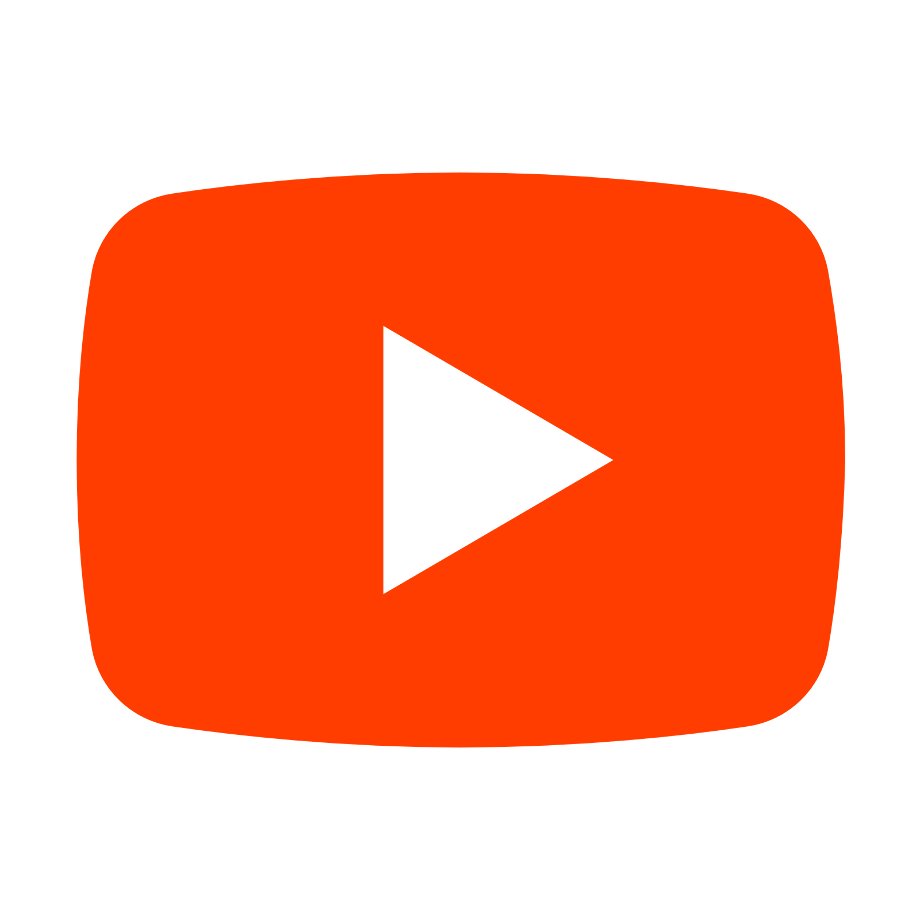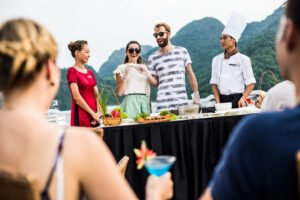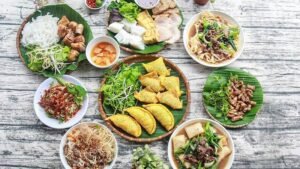Visiting Temples in Vietnam: What to Do and What to Avoid
 Mai Anh
Mai Anh
Embarking on a journey to explore the temples of Vietnam is a venture into the heart of its rich cultural tapestry. Yet, amidst the serene ambiance and spiritual sanctity, it’s crucial to navigate these sacred sites with respect and awareness. In this guide, Sun Getaways Travel unravels the dos and don’ts, offering insights on how to honor traditions while immersing yourself in the spiritual essence of Vietnam’s temples.
Table of contents
1. Importance of Respecting Temple Rules
It’s vital for visitors to Vietnam temples to deeply honor the beliefs, customs, and traditions of the local community. By abiding by Vietnam temple rules, you demonstrate profound respect for the spiritual significance these places hold.
- Spiritual importance: Temples in Vietnam hold immense cultural and religious significance. They serve as vital centers for spiritual practices and worship, where locals seek blessings and connect with their deities. Additionally, these temples are revered sanctuaries for meditation and contemplation.
- Cultural immersion: Adhering to Vietnam temple rules offers a gateway to understanding the intricate fabric of local culture and society. It provides an opportunity for cultural integration and fosters spiritual growth through contemplative practices.


2. Dressing Appropriately
Today, Vietnamese temple dress codes are relatively lenient, but inappropriate attire may still draw unwanted attention. The key is to opt for comfortable, modest, and respectful clothing. Here are some guidelines for your outfit:
- Cover your shoulders and knees: Both men and women should wear attire that covers these areas. Some temples provide scarves, but it’s wise to bring your own long scarf for versatility.
- Choose loose-fitting clothing: Tight outfits may be viewed as disrespectful, so opt for loose-fitting garments. Not only are they respectful, but they’re also comfortable, especially in Vietnam’s hot and humid climate.
- Avoid flashy accessories: While it’s not necessary to remove jewelry, refrain from wearing anything overly bright or extravagant. Keeping a low profile helps to maintain respect and avoid unnecessary attention.

3. Behavioral Guidelines
The key principles for proper behavior include humility, politeness, and relaxation. Let’s review the following guidelines with New Asia Tour:
- Avoid loud conversations or noise.
- Remove hats and sunglasses upon entering temples or pagodas.
- Refrain from touching religious artifacts or offerings.
- No smoking within temple premises.
- Respect monks and religious officials.
- Follow any specific rules or rituals set by temple authorities.
These guidelines are simple and enhance your cultural and religious experiences in Vietnam, reflecting the country’s fascinating cultural philosophy and practical norms.

4. Offering Etiquette
Incense Offering: Vietnamese culture associates burning incense with conveying one’s breath and spiritual essence to divine spirits to invoke blessings. This tradition signifies respect and gratitude. Typically, incense sticks are ignited at their top in a calm area until they emit smoke. After placing the sticks in holders, individuals bow in prayer or recite Buddhist scriptures. Offering incense at all altars isn’t mandatory; lighting one stick initially suffices, followed by prayers at other altars. In some temples, monks light incense, relieving visitors from this task.

Fruit and Flower Offerings: Visitors can prepare fruits and flowers at home, cleanse them, and present them on temple altars. Outside, vendors sell various items for offerings, including flowers, fruits, joss paper, sticky rice, cakes, and vegan food.

Donations: Upon temple entry, individuals often place loose change on altars or donate through designated boxes. Some prefer direct donations to temple representatives, with contributions recorded. Leaving a small donation is customary to aid in temple maintenance. Additionally, donations may include goods like food, benches, or trees for temple grounds.

Explore more Vietnam Packing Guide >>> What to Wear on Your Holiday
After reading this guide on temple etiquette in Vietnam, you have gained insight into appropriate attire, behavioral norms, and valuable tips for your upcoming temple visits. Should you require assistance or guidance during your trip, feel free to reach out to Sun Getaways Travel for a seamless experience in Vietnam!
Ask a question
Leave a Comment (0)
No questions yet. Be the first to ask a question!






















